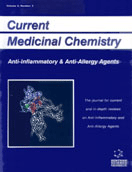Abstract
H1 antihistamines are first line drugs in the treatment of allergic rhinitis and chronic idiopathic urticaria and widely used in children as well as in adults. Although first-generation antihistamines are effective in relieving allergic symptoms, they are not preferred because of their sedative side effects. The earliest "second generation" antihistamines, terfenadine and astemizole, non-sedating alternatives to the first generation counterparts are not commonly used due to their potential arythmogenic effects. The newer second-generation antihistamines such as loratadine, fexofenadine, mizolastine, ebastine, cetirizine, levocetirizine and desloratadine have been shown to be efficacious and well tolerated with additional anti-inflammatory effects and lacking cardiotoxic potential activity in adults. The early treatment of atopic children study, the long term clinical trial with cetirizine of infants with atopic dermatitis demonstrated that cetirizine delayed the onset of asthma in patients sensitized to grass pollen or house dust mite; and also reduced the duration and the amount of topical steroids used in the treatment of atopic dermatitis. In the Preventia I study, which was designed to evaluate the efficacy of loratadine in reducing the number of respiratory infections in young children at risk of recurrent infections, loratadine was not found to be significantly different from placebo. Both drugs were found to have a similar safety profile to that of placebo confirming their long-term use in infants and children. Pediatric formulation of desloratadine, which has favorable effect on nasal congestion, is marketed worldwide now. The effectiveness of new antihistamines in the treatment of urticaria in pediatric age group is based on extrapolation of adult studies performed in this area. Further studies with new antihistamines are needed for their evidence-based use in children with urticaria and atopic dermatitis.
Keywords: allergic disorders, allergic rhinitis, histamine receptors, inflammation, histaminergic nerves, loratadine
 11
11

